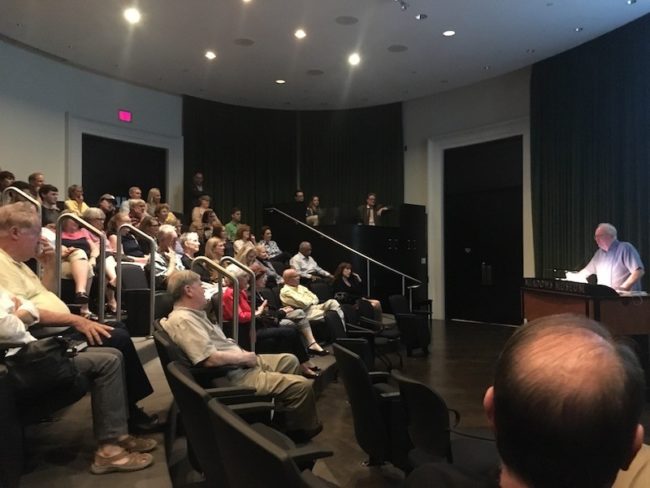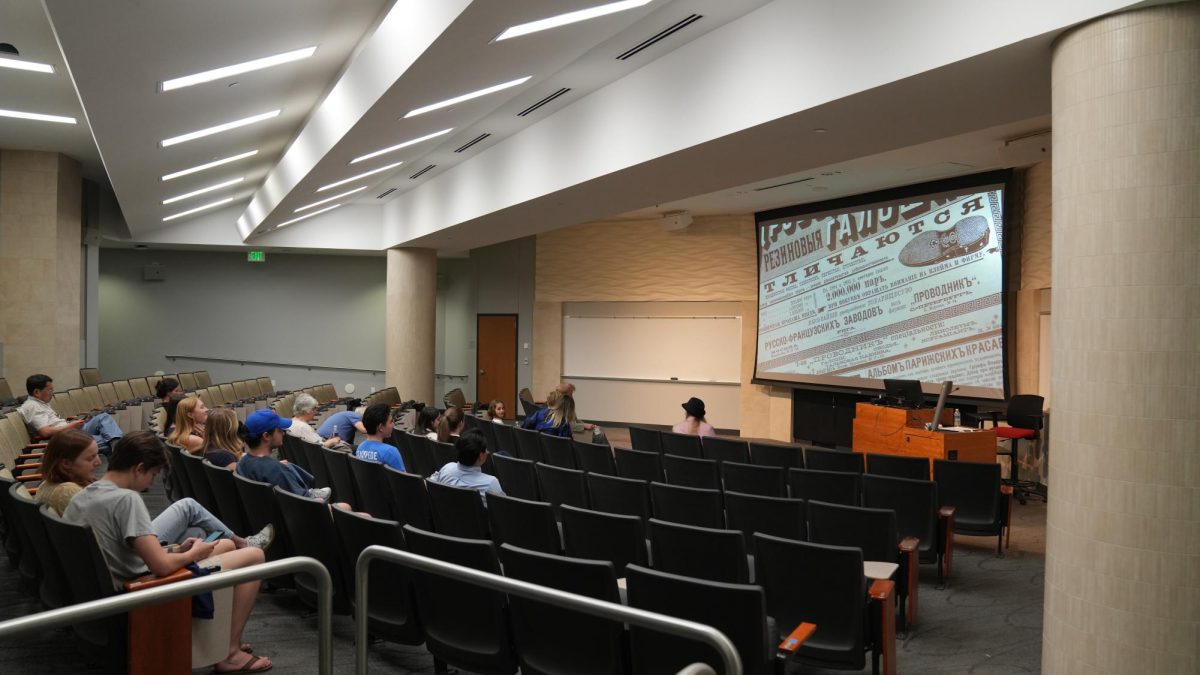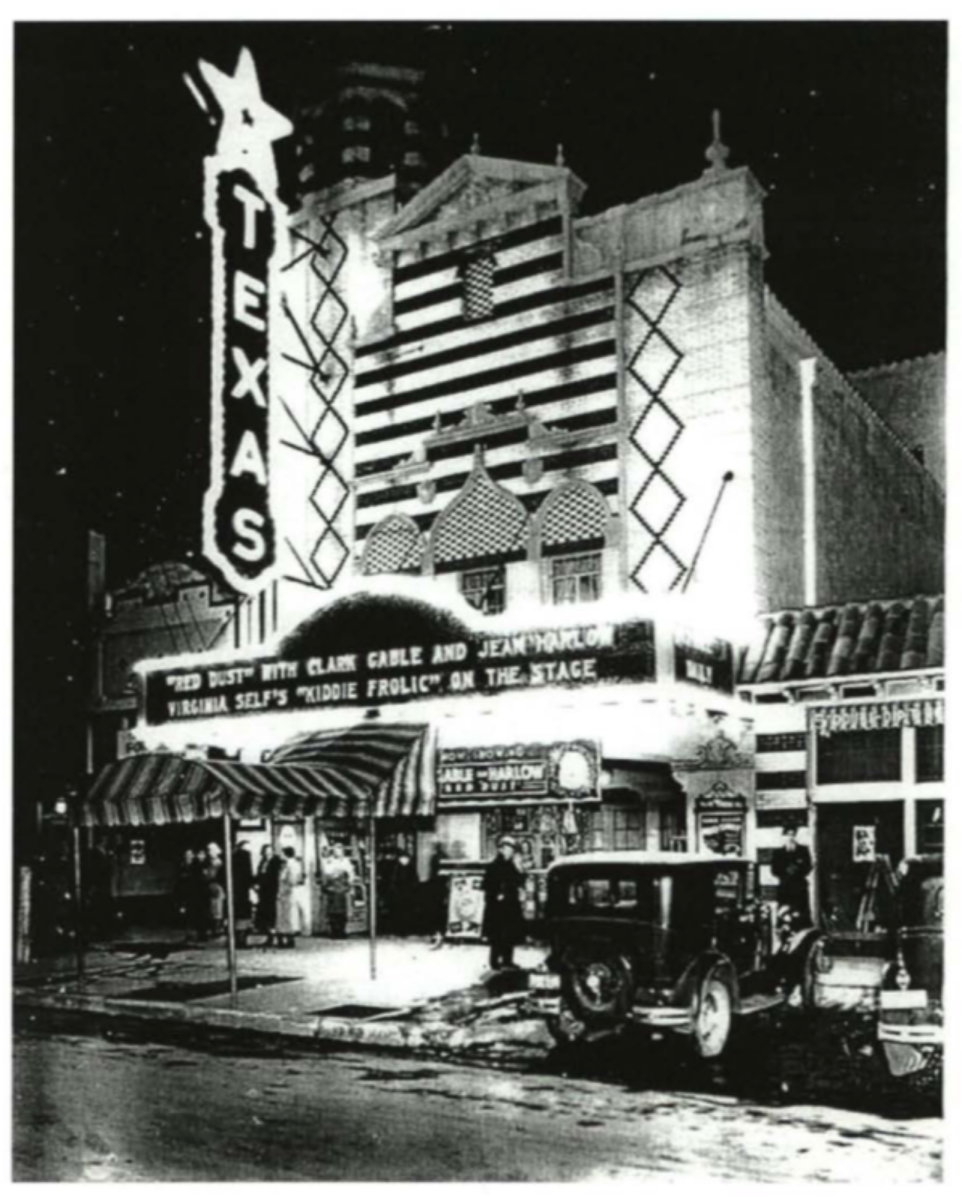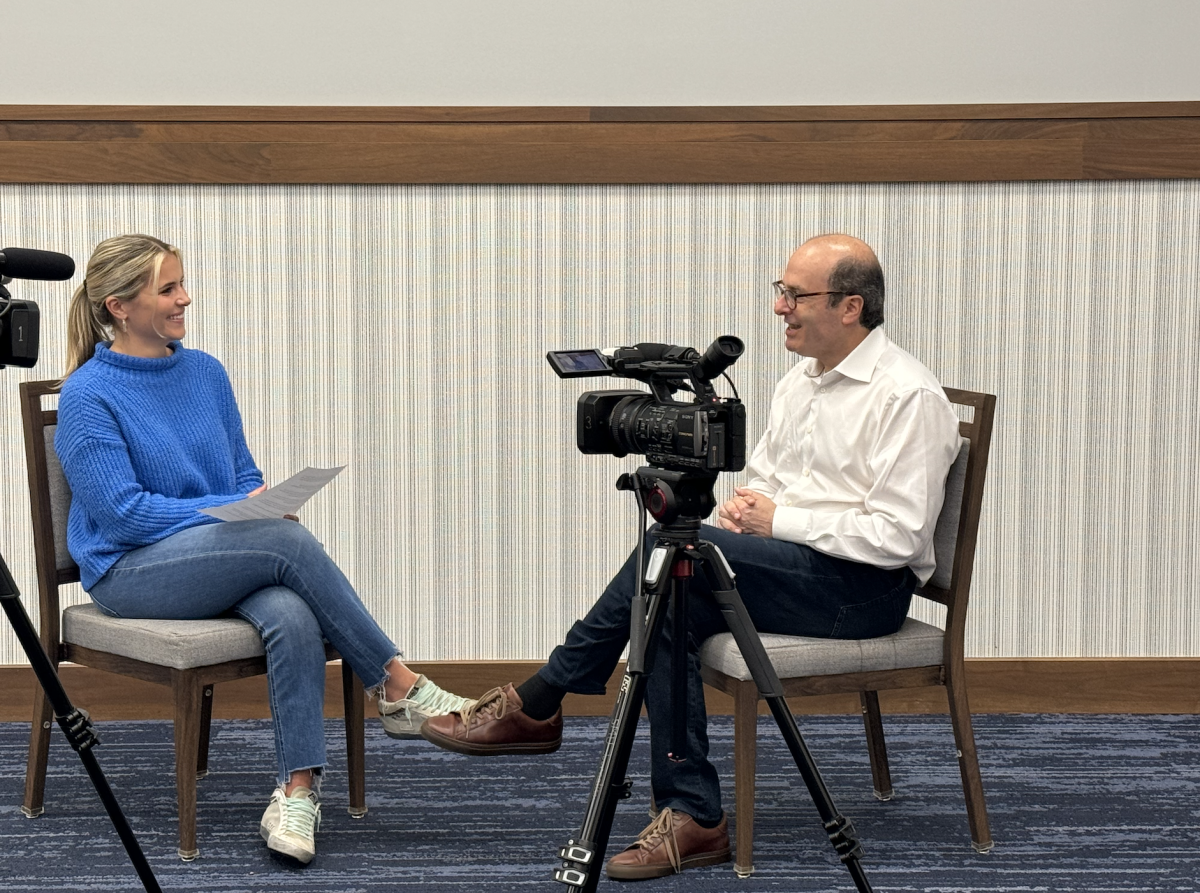81 members of the Dallas community reacted strongly to two films shown and discussed during “Surrealist Collaborations: Salvador Dalí and Luis Buñuel” in the Bob and Jean Smith Auditorium on Sept. 13.
“People behind me were roaring laughing, and I kept thinking ‘What’s so funny?’” Dallas citizen Marion Klein said. “I thought it was sickening. I didn’t understand any of it, and I wasted my time.”
Klein was not the only one who didn’t enjoy Dalí’s surrealist films. A few people shook their heads as they left the auditorium after the first film was shown.
Others dropped their jaws in shock when they saw their neighbors laughing at startling scenes during the films. One of these scenes included a man pushing an elderly blind man over onto the street.
However, controversial images like these intrigued other viewers. SMU graduate student Cain Miller enjoyed the risks the films took.
“It’s fascinating to see how certain auteurs like Buñuel and Dalí went against the grain and intentionally made art that was both visually and thematically challenging, particularly for its time,” Miller said.
Most of the people in the auditorium agreed with Miller, and they found the films funny as well as interesting. Some of the comedic scenes that caused viewers to laugh included ants crawling out of hands and dead donkeys on grand pianos.
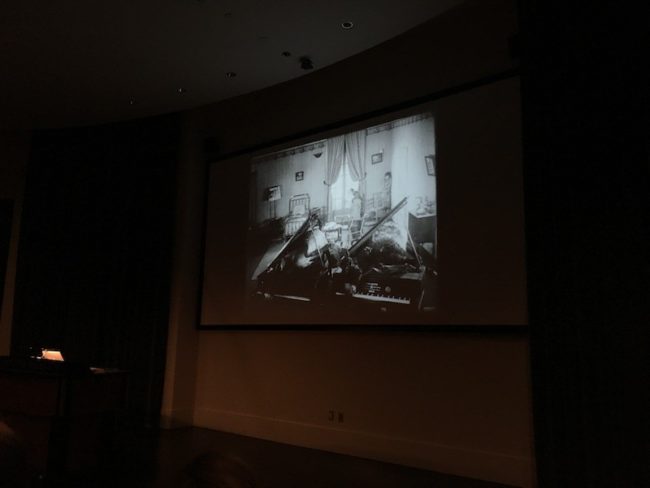
The two films, “Un Chien Andalou” (1929) and “L’age d’Or” (1930), also had educational value. Students in the crowd took notes as Dr. Rick Worland, Professor of Film and Media Arts, explained the historical context of both films.
Worland said that film became more experimental and powerful in the 1920s and 1930s because of the influences of places like Germany and the Soviet Union.
New ideas about the human mind also inspired the creation of the two films shown and discussed in “Surrealist Collaborations: Salvador Dalí and Luis Buñuel.” Dalí and Buñuel combined their dreams with the recent discoveries of Sigmund Freud to create both films.
“Un Chien Andalou” and “L’age d’Or” challenged the opinion of status at the time they were made. Many scenes insulted the French upper class and the Roman Catholic church with warped versions of their daily lives.
The cultural inspirations for Dalí and Buñuel’s films also inspired many of Dalí’s other surrealist pieces. The Meadows Museum sponsored the screening of these two films to raise awareness for Dalí’s other works in their new exhibition: “Dalí: Poetics of the Small, 1929–1936.”
The Meadows Museum’s Director of Education Scott Winterrowd found many similarities between Dalí’s collaborative films and Dalí’s solo paintings in the museum’s new exhibition.
“The first work in our show is from 1929 and we have a group of works from 1930-32 that have references to symbols and themes in both films,” Winterrowd said. “Ants populate both, and there are a number of other connections in terms of Dalí’s symbolism which finds a place in both film and in the paintings.”



